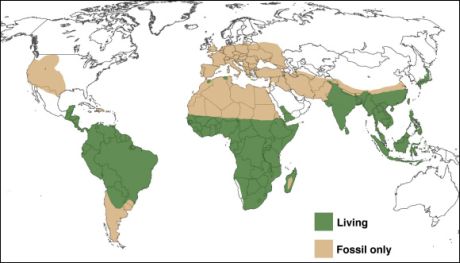 The primate order includes a tremendous array of species, some of them already familiar to us: the lemurs of Madagascar, the great apes of Asia and Africa, all the diverse monkeys of the tropical world. But there are other faces in the primate clan – a host of engaging oddities, peculiar and secretive creatures that most of us have never seen: pottos and tarsiers, lorises and galagos, angwantibos and more.
The primate order includes a tremendous array of species, some of them already familiar to us: the lemurs of Madagascar, the great apes of Asia and Africa, all the diverse monkeys of the tropical world. But there are other faces in the primate clan – a host of engaging oddities, peculiar and secretive creatures that most of us have never seen: pottos and tarsiers, lorises and galagos, angwantibos and more.
Primates survive in the equatorial regions of three continents – from the rainforests of southern Mexico to the northern frontier of Argentina; from the great archipelago of Indonesia to the mountains of southwest China; and most spectacularly, throughout the ancestral immensity of Africa, from the sub-Saharan bushlands and savannas to the failing strongholds of the Congo Basin, and down to the fynbos scrub of farthest South Africa.
We presently (May 2023) recognize 533 species of non-human primates in 82 genera, and a total of 723 species and subspecies overall. New species and subspecies are continually being described: 128 since 1990, 101 of them since 2000.
1 May 2023.
Map credit: Kim Meek and J. M. Aguiar (following Fleagle, J. G. 1999. Primate Adaptation and Evolution. Academic Press, New York). Please note this map is intended for purposes of general illustration, and not as a definitive reference.


